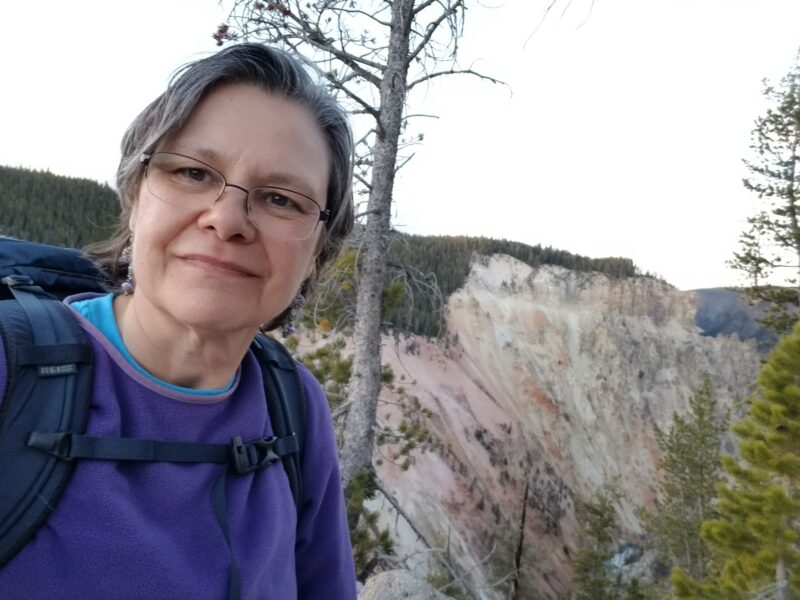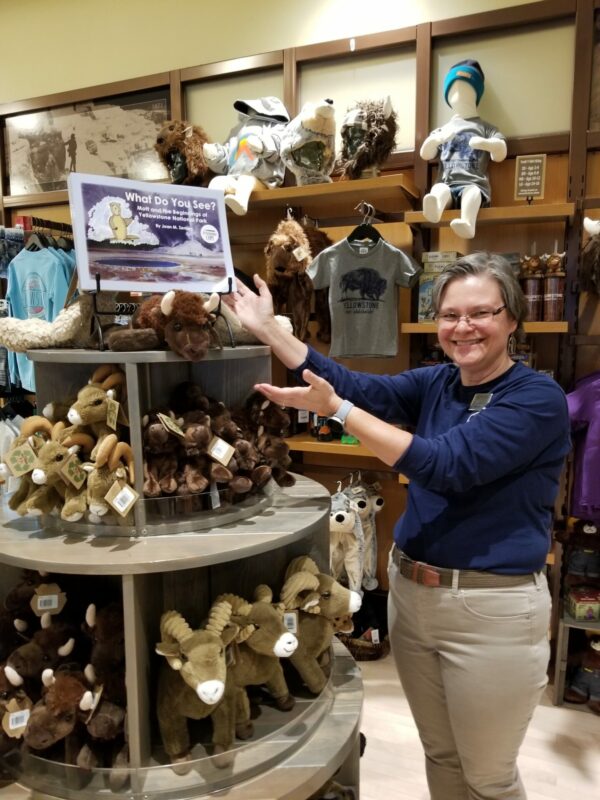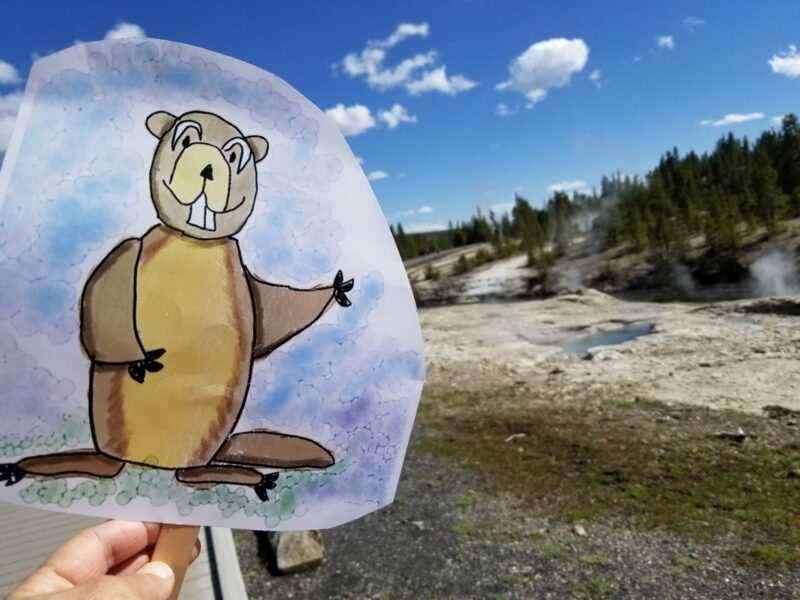Being intentional about my career choices in public history and beyond
30 August 2022 – Joan Zenzen

Me along the South Rim. Photo credit: Joan M. Zenzen.
Editor’s Note: This post is part of a series of reflections from winners of NCPH awards in 2022. Joan Zenzen is the winner of the Excellence in Consulting Individual Award for her work on Using Oral History to Affect Community Change: Action in Montgomery at its 20th Anniversary.
For the past few years, even before the pandemic, I have wanted to test myself and see how I could apply my public history skills in different scenarios. I wanted to say “yes” to new opportunities. I also recognized that my history training and social justice advocacy had not sufficiently incorporated an anti-racist stance. These two driving forces have shaped my current approach to my career. I have intentionally adopted new projects that surprise me and make me—I think—a stronger and more engaged public historian.
This intentional approach led me to Yellowstone National Park, where I lived, worked, and played, from April 20 to July 31, 2022. First, a little background: I have worked independently writing administrative histories of individual park sites for the National Park Service for the past 25 years. I have written histories on four national battlefield sites, Voyageurs National Park in Minnesota, and Rock Creek Park in Washington, DC. I have loved this work, visiting parks to do research, conducting more than 200 oral history interviews, and writing six book-length studies that are all available on the web, with two published through university presses.
I have learned as a self-employed public historian that networking and maintaining communication with different kinds of people is essential, but my intentional approach to antiracist public history also made me more keenly aware of the importance of focusing on my local community. So, when a friend suggested that I talk to the lead organizer for a local non-profit doing social justice work, I said yes. I applied for and won grant money from my county’s Arts and Humanities Council for the project. I found myself eagerly participating in training to be an organizer and then doing a series of oral history interviews with people in my community about topics like affordable housing and community centers in historically African American neighborhoods. I wrote four case studies that the organization now uses in its trainings. NCPH honored me with the independent consultant award this year for that project.
This project fed into my goal of learning more about racism (in my local area and beyond) and how to advocate as an antiracist. I began reading and discussing with friends and colleagues books on these topics. I have found that what I thought “I knew” I did not. Perhaps most shocking to me has been learning about the segregationist practices my county government engaged in to drive out Black communities in the 1950s.

My book on display in the gift shop where I work. Photo credit: Joan M. Zenzen.
And now, Yellowstone National Park. When I realized last summer that the park’s 150th anniversary was in 2022, I knew that I wanted to contribute to this milestone. I did not have time to write a full park history. My husband said, “Write a children’s book.” I said, “No.” The next day, though, I drafted some text that sounded more like my dissertation (which was based on Yellowstone and other iconic national parks) than a book for kids. My husband wisely responded, “You need an animal.” I quickly rejected this idea. I did not want to go “cute.” The next day, though, I started thinking of which animal might work: bison, bear, elk, marmot. Yes, I would use a yellow-bellied marmot to tell the story. Marmots are like groundhogs with expressive faces and their antics around the geysers have long captured the attention of kids and adults alike.
I also decided that I would make the book a social justice action. I contacted the Smithsonian National Museum of the American Indian and the Buffalo Bill Center for the West in Cody, Wyoming, to better understand the Native story. I had friends with extensive experience in Native history review my drafts. I chose a Native American-owned printing company in Minnesota to print the book. I wrote a blog post about how I understood that the 150th anniversary meant something very different to the twenty-seven associated tribes of Yellowstone National Park but that I hoped that my careful attention to the Native story would educate kids and their parents about the complexity of the park’s history.
When I started to make reservations to spend a week or so in Yellowstone this summer, I pushed a button on the concessioner Xanterra’s website that said, “Apply for a Job.” I had always wanted to work in the park. It was super late at night in late December, and I thought, “Why not get paid to be in the park?” The next week, I was hired. I started April 20, helping to set up the gift shop at the Mammoth Hotel. We opened on April 29. When I told people about my book on Yellowstone’s beginnings, many people applauded my including more than a passing reference to Native Americans and my choice of a Native-owned printer. Those two factors helped influence Xanterra to sell my book in three gift shops and to host a two-day book signing.

I bring Mott along when I go exploring. Photo credit: Joan M. Zenzen.
My intentional career choices have led me (back) to explore new opportunities and experiences. I am taking my public history skills and applying them in unexpected ways. I am using my growing knowledge of antiracism, inclusion, diversity, and equity in my work. I hope that my efforts help children and their adult caregivers to have a greater appreciation of Yellowstone’s complex past. I hope that I find new ways to express my knowledge and public history abilities in other surprising but connected ways. I love my work and how it evolves and helps me make a difference.
~ Joan M. Zenzen has written about four battlefield national park sites, Voyageurs National Park, and Rock Creek Park in Washington, DC. Her children’s book, What Do You See? Mott and the Beginnings of Yellowstone National Park, is available through her Etsy site “JoanZenzenBooks.” She also is a silversmither, and her earrings and other jewelry are available at her Etsy site “JoanZenzenJewelry.” Find out more about her work at www.joanzenzen.com.



